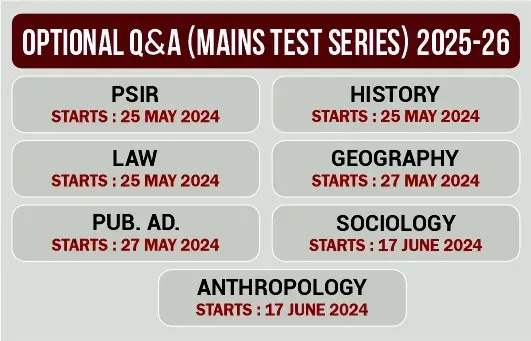GIST OF SANSAD TV : New Era in Indian Space Sector
Introduction
- Under the mission ‘Prarambh’, the launch of Vikram-S on 18th November 2022 marks a new era in India’s space programme.
- It marks the beginning of a private venture into the promising space launch market.
- It is the country’s first privately developed rocket, successfully launched in a sub-orbital mission from the Sriharikota spaceport.
We shall be examining the Mission Prarambh, the road it paves for increased private sector participation, and India’s position in the global space market.
How Big is Space Launch Industry?
|
About of Vikram-S:
|
- The global space launch services market size was valued at $9.88 billion in 2019.
- It is projected to reach $32.41 billion by 2027, growing at a CAGR of 15.7%from 2020 to 2027.
|
Key players providing Space Launch Services:
|
- Current estimates predict that the revenue generated by the global space industry could increase to over $1 trillion annually by 2040.
Where does India stand in the global space market?
- As per SpaceTech Analytics, the strategic analytics agency:
- India is the sixth-largest player in the industry internationally having 3.6% of the world’s space-tech companies (as of 2021).
- The U.S. holds the leader’s spot housing 56.4% of all companies in the space-tech ecosystem.
- Other major players include the U.K. (6.5%), Canada (5.3%), China (4.7%), and Germany (4.1%).
Deep space tech startups in India:
- Skyroot Aerospace, AgniKul Cosmos, Pixxel, Dhruva Space, SpaceKidz India, Bellatrix Aerospace, Aantriksh, Astrogate Labs, Kawa Space, Blue Sky Analytics, Vellon Space, and SatSure are some of the Indian space tech startups aiming to bring a revolution in the space sector.
What is driving the demand for the launch services?
- Demand for a more connected world: A large percentage of this market is driven by services, such as satellite communications, Earth observation, and Positioning Timing and Navigation (PNT).
- Commercial Opportunities: Commercial opportunities arise from the demand for Earth observation data in their decision-making processes of many services.
- Evolving NewSpace: This newspace is nothing but a constellation of small satellites in Low Earth Orbit (LEO), giving a boost to a ‘connected world’, thereby thriving demand for economical launch services.
- Investment Opportunities: These constellations are attracting numerous players from IT and big data with financial backing from Venture Capital (VC) and Private Equity (PE) funds.
- Growing demand for Micro-Launchers: NewSpace clients demand novel access to space, meeting their specific cost, launch flexibility, and scheduling needs.
- Demand-supply gap: The annual budget of ISRO has surpassed Rs 10,000 crores (US$1.45 billion) and is increasing. However, India’s need for space-based services significantly exceeds what ISRO can supply.
- Small satellite is the future: Greater data processing and transmission capacity are reducing the size of satellites, indicating the future rests with smaller satellites.
- Some CubeSats have already started to include Ku-Band and Ka-Band transmitters with rates of several hundred megabits (Mb) per second, or even gigabits (Gb).
How can we consider the Vikram-S launch as a game changer?
- Attract more private players: The scientific and commercial opportunities for innovations to develop superior technologies are going to attract private players.
- Reduce the cost of launches: This launch vehicle has a carbon fiber core structure; 3D printed solid thrusters; using Kalam-80 for propulsion. Using 3D printing we can reduce the costs of launch.
- Possibilities for the manufacturing sector: A lunch requires numerous components, sub-systems, devices, and different kinds of materials. This historical moment will provide immense thrust to the domestic manufacturing sector and ‘Make in India’ campaign.
- Increase the diversity of the Indian space program: The market will be able to expand and find new niches in space activities.
Why is development in the space sector important?
- Improving Connectivity: Enhancing space technology would be beneficial to bolster connectivity and combat climate-related implications.
- Satellite communication can reach more remote areas where conventional networks would require heavy complementing infrastructure.
- Pragmatic Planning: Timely combative plans of action for farmers and dependent industries will be easier to work upon.
- Real-time tracking can also serve multiple purposes in defense.
- Real-time monitoring and early-warning solutions against natural disasters such as earthquakes, tsunamis, floods, wildfires, mining, etc.
Steps taken to boost privatization in the space sector in India:
- IN-SPACe: IN-SPACe was launched to provide a level playing field for private companies to use Indian space infrastructure.
- It acts as a single-point interface between the Indian Space Research Organisation (ISRO), and everyone who wants to participate in space-related activities or use India’s space resources.
- NewSpace India Limited (NSIL) 2019: Announced in Budget 2019, it aims to use research and development carried out by ISRO over the years for commercial purposes through Indian industry partners.
- Indian Space Association (ISpA): ISpA aspires to be the collective voice of the Indian Space industry. ISpA will be represented by leading domestic and global corporations that have advanced capabilities in space and satellite technologies
Conclusion:
By this launch, we have proven the functional aspects of our intellectual capacity and scientific-knowledge base of new India. This accomplishment bears testimony to the immense talent of the youth. We already have the right infrastructure in place as a result of decades of hard work of ISRO and other agencies. With the momentum that we have gained from the launch of Vikram-S, it is a certainty that the private sector is going to lead the space sector at an exponential pace.
 Download PDF
Download PDF




